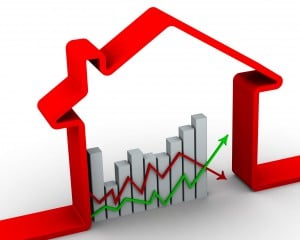2020 has already shown itself as a year of confusing economic signals, mixed real estate messages and bewildered investors.
In other words: the perfect environment for strategic long-term real estate investors. 
Over the last 25 years or so, I‘ve been analysing the Australian property markets from a unique point of view – I don’t look at the real estate numbers.
To be honest I wasn’t doing it this way for the first 20 years or so of my investing career, but since I’ve changed what I look for, it’s made a huge difference to my results and those of my clients.
This approach has allowed me and the strategic investors who understood this methodology to move forward when the property signals were mixed and confusing.
For mine, using this approach is now more important than ever with the ongoing issues in the world’s economy, and the very varied forecasts for what’s ahead for the Australian property markets.
Think about it…how did all those predications many of the forecasters made this time last year turn out?
Most were wrong, and if history repeats itself, and it most likely will, many of the forecasters will be wrong again this year .
Clearly we are at the beginning of a new property cycle – an opportunity like this does not occur more than once every decade or so.
Of course there is not one real estate market, so different locations are at different stages of their own property cycle, and moving forward some markets will strongly outperform others.
Don’t be surprised by the many mixed signals.
At turning points in the property cycle mixed messages are normal, and of course despite lots of good news our property markets are still facing certain headwinds.
The good news (for you) is that I’ll be explaining my methodology at my upcoming Property and Economic Market Update 1-day trainings in Brisbane, Sydney and Melbourne in March and April.
There will be a lot of new and updated content I haven’t shared at these events before – so click here now and get all the details and reserve your place.
In the meantime here are four insights to help you cut through a lot of the confusion and to take a strategic approach in 2020 and beyond:
1. Ignore the Property Statistics
If you are trying to predict what’s coming in the property market, don’t look at the real estate statistics – they only represent the past.
It’s a bit like trying to drive while only looking in the rear view mirror.
Strategic investors understand that what is going to occur in the future is more important than what has already happened.
Sounds simple, doesn’t it?
Yet, people still allow the headlines to dictate how and where they invest.
Currently too many investors are making their investment decisions based on the media and not on the fundamentals.
In fact they’re making 30 year decisions based on the last 30 minutes of news.
An if you think logically (and not emotionally) that doesn’t make sense
Having said that at my Property and Economic Market Update 1-day trainings I’m still going to give you all the property statistics you’ll need, including a handout from Dr. Andrew Wilson, Australia’s leading property economist, packed full of charts.
But we’ll put them in perspective.
So click here now and get all the details and reserve your place.
Just to make things clear… what I’m getting at is that to accurately predict where the property market is going, an investor must understand the macroeconomic big picture and pay close attention to economic, population and wages growth to accurately predict the direction of a local property market 18 months in advance of its move.
If you’re only analysing the market using the commonly quoted property stats you’re at least 18 months behind these strategic investors.
Some of the statistics that give me confidence in not only the long term property market fundamentals, but the short and medium term outlook include:
- While the world’s economy is sluggish (to say the least) a global recession remains unlikely, barring a major external shock.

- In Australia, strength in infrastructure spending and exports will help keep the economy growing but it’s likely to remain constrained to around 2% by the housing construction downturn, subdued consumer spending and the drought.
- International visitors continue to visit to Australia bringing their hard earned money with them
- Our banking system is in good shape with a very low level of defaults.
- Population growth is still strong.
- There is significant government spending on infrastructure – this creates jobs and uses local resources and leaves a legacy for future generations. And with a budget surplus likely to be announced later this year, more government spending could be on the way.
Don’t get me wrong…
There are plenty of headwinds ahead – I’m haven’t missed them. Some of these include:
- Minimal wages growth
- Low inflation
- A housing construction slowdown
- Increased energy costs and petrol prices.
- Challenges getting down our unemployment rate and pushing up inflation.
- Subdued retail spending
I’ll explain the significance of all this plus more including what to watch out for at my upcoming Property and Economic Market Update 1-day trainings. So click here now and get all the details and reserve your place
2. Ignore Median Property Prices
If you’re like me, you regularly get the property statistics like auction clearance rates; median house price growth, etc.
However, it is important to not try to predict your specific target market’s performance using these national or state based numbers.
For instance, it is impossible to predict Brisbane’s property market when only looking at GDP or job stats for Australia as a whole.
You see…averages don’t matter. 
Firstly I’ve never seen our property markets as fragmented as they are – each state is at a different stage of it’s property cycle, and within each state there are various markets (some geographic, other by price point and yet others by property type) each at their own stage of their property cycles.
Also… different research houses come up with different stats because of how they collect and interpret the data.
Have you noticed how there are 3 or 4 different median prices for each city?
This means that some of these stats produce an inaccurate indication of what is actually happening in the “real world”, yet you’ll often find them quoted as a representation of what’s happening in the market.
Fact is: these figures often present a distorted view of a market’s performance.
For instance, when there is a disproportionately high level of sales activity of high end real estate, as is happening in our burgeoning Sydney and Melbourne property markets, it may appear that values in the whole region are increasing purely because the median price will look higher than it had previously.
The reverse is also true.
Over the last year or two, during the property slump when fewer high end prestigious home sales were transacting, it looked like median figures were declining in some locations, while the value of certain properties in those locations were still increasing.
In order to cut through the confusing signals, rather than just analysing the real estate market numbers (which are obviously important), it is also important to look at your target location’s specific micro economic factors
A great place to begin would be to get answers to the following questions on your target suburbs:
- What are the demographics in this location?
- Are wages growing here faster than the national averages?
- What are the long term job prospects in the surrounding suburbs?
- What is the unemployment rate?
- What is the supply and demand ratio like in that suburb
Real estate investing involves a whole lot of variables, so minimising your risk is imperative.
The best offence is a good defence, and making sure you’re informed and on top of the latest trends and research is going to keep you ahead of the curve.
That’s why I’ll be explaining what I look for at my upcoming Property and Economic Market Update 1-day trainings in 3 states in March and April.
So click here now and get all the details and reserve your place.
3. Be Aware of Key Influencers
Key influencers differ from key drivers of the property cycle in that they often have a shorter term, yet dramatic, impact on specific markets.
These key influencers (which can be economic or government based) can confuse a property investor as they make it look like a boom or bust is occurring when it really isn’t.
For example, a few years ago we were witnessing an influx of foreign investors putting their money into Australian real estate because they saw it as a safe haven.
This influencer pushed property demand in our inner CBD apartment markets beyond the true intrinsic demand, making them over-priced.
How long this influencer would be in effect was more difficult to predict at the time, but like other influencers their life span was limited, and this one dried up pretty quickly didn’t it?
I’ve seen this happen in the past, particularly in the late 1980’s, when due to economic changes on the other side of the world, money was repatriated to higher yield economies.
And when that happened, certain property markets plummeted. 
Remember: influencers can push property markets higher their real value and can lead to a false sense of security to those investors who don’t understand that they are temporary.
At my upcoming Property and Economic Market Update 1-day trainings I will explain some of the other influencers currently affecting the markets and which you need next few years to understand how to be successful.
So click here now and get all the details and reserve your place
4. Always Invest Based on Capital Growth
We’re at the beginning of a new property cycle and those investors who follow a strategic plan (of course it must be the right strategy) are likely to come out ahead.
For mine, capital growth is the most important reason to buy residential real estate. 
I know not everyone agrees with me, but all the wealthy people I know have built themselves a large asset base first and then transitioned to the cash flow phase of their investing.
Of course we would all like to buy properties that have both great capital growth and high rental yields, but if you purchase an “investment grade” property, that’s just not how it works.
In Australia properties with higher capital growth usually have lower rental returns.
In many regional centres and secondary locations you could achieve a high rental return on your investment but, in general, you would get lower long-term capital growth.
I understand why investors prefer a high yield.
They feel they need the high rental return to pay the mortgage.
They also believe they cannot buy many properties because they can’t afford to service additional loans.
I guess that’s why many beginning investors make the mistake of viewing their property investments as income driven.
Of course cash flow is critical – you need it to stay in the market.
But it’s really capital growth that will get you out of the rat race.
Having said that, in these times of tighter lending practices, cash flow is even more important than ever so at my upcoming Property and Economic Market Update 1-day trainings I’ll be explaining how you can get the best of both worlds – both high capital growth and strong cash flow – and the answer is probably not what you think.
So click here now and get all the details and reserve your place:
The bottom line:
As we move through 2020 it is important to think and plan for the long term and not get ambushed by the short term mixed messages in the media.
At times of confusion it will be more important than ever to seek advice and counsel from advisors who are independent and who’ve experienced times like this before.
So please join me and a team of property experts at my upcoming Property and Economic Market Update 1-day trainings – we have no properties for sale – so we can be brutally honest.
So click here now and get all the details and reserve your place in order to position yourself best for what’s coming… rather than continually looking in the rear view mirror.
from Property UpdateProperty Update https://propertyupdate.com.au/2020-year-confusion-concern-consternation-perfect-environment-strategic-property-investors/


No comments:
Post a Comment